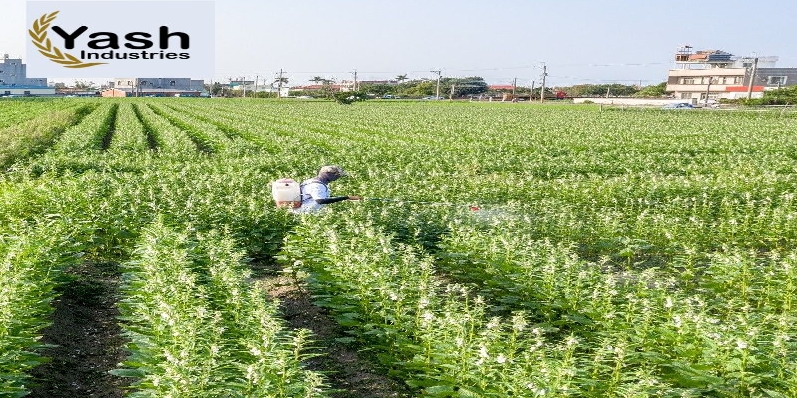
17-05-2024
The Journey from Farm to Table: How Organic Sesame Seeds Are Grown and Processed
- Admin
Introduction
Organic sesame seeds are appreciated for their rich flavor and myriad health benefits. From adding a nutty crunch to your dishes to being packed with required nutrients, these are integral to different dishes across various societies, improving both taste and dietary benefits. These tiny seeds are a kitchen staple. This process involves careful cultivation, harvesting, and processing, all done using organic methods to ensure the seeds are healthy for you and the environment.
The Beginning: Cultivating Organic Sesame Seeds
Cultivating organic sesame seeds involves a series of meticulous steps to ensure the production of high-quality, chemical-free seeds. The process begins with the careful selection of premium, non-GMO seeds, followed by thorough soil preparation, which includes testing and enriching the soil with organic matter to enhance fertility
Selecting the Right Environment
The first step in the journey of organic sesame seeds is selecting the perfect environment. Sesame plants flourish in warm, tropical, and subtropical climates with well-drained, fertile soil. Farmers choose regions that meet these criteria to ensure a bountiful harvest.
Soil Preparation
Organic farming refrains from synthetic fertilizers and pesticides. Instead, farmers prepare the soil with organic compost and natural fertilizers, increasing soil fertility and ensuring the sesame plants receive important nutrients.
Planting the Seeds
Planting the Seeds process begins with carefully sowing high-quality, organic sesame seeds at a shallow depth of about 1-2 centimeters into well-prepared soil.
Sowing Techniques
Sesame seeds are sown in the spring when the soil has adequately warmed. Farmers use precision planting techniques, ensuring the seeds are placed at the correct depth and spacing, promoting even germination and robust growth.
Optimal Planting Times
Timing is everything. There should be an appropriate time for planting, which is not too early or too late. Hence, farmers monitor soil temperatures and weather conditions closely to determine the optimal planting period.
Growing Process
Farmers prepare the soil through organic methods, growing its fertility with compost and well-rotted manure. The seeds are sown at a shallow depth, ensuring optimal germination, and space to promote healthy plant growth.
Natural Pest Control Methods
Organic farming relies on natural pest control. Farmers introduce beneficial insects, use neem oil, and plant companion crops to repel pests. These eco-friendly practices maintain a healthy ecosystem and protect the sesame plants.
Weed Management
Weeds can compete with sesame plants for resources. Organic farmers use mechanical weeding, mulching, and cover crops to suppress weeds, which also improves soil structure and moisture retention.
Irrigation Practices
Sesame plants are drought-tolerant but need an excess amount of water during flowering and seed development. Drip irrigation systems are often used in organic farming to conserve water and ensure consistent moisture levels.
Harvesting the Seeds
The process involves collecting mature seeds from plants for future planting or consumption. The method and timing of harvesting seeds depend on the type of plant and the purpose of the seeds.
Identifying the Right Time to Harvest
Harvest timing is crucial. Farmers wait for the seed pods to turn a specific color and start to crack open, indicating maturity. This ensures the seeds are harvested at their peak.
Manual vs. Mechanical Harvesting
Harvesting can be done manually or mechanically. Small-scale farms often handpick seeds to minimize damage, while larger farms use mechanical harvesters designed to collect seeds efficiently without compromising quality.
Packaging and Distribution
Packaging and distribution are basic parts of the supply chain that include preparing the products for transport and delivering them to customers.
Packaging Methods
Sorted and graded sesame seeds are packaged in eco-friendly packaging, which maintains freshness and prevents contamination. Proper labeling provides information about the seeds’ origin, nutritional content, and organic certification.
Ensuring Freshness and Quality
Maintaining the quality of sesame seeds is crucial. Proper storage conditions and packaging ensure that the seeds remain fresh from the farm to your table.
From Farm to Table: The Final Destination
It is a concept that highlights the journey of food from the point of origin on a farm to its ultimate consumption on the table. It encompasses various stages, each crucial in ensuring the quality, safety, and sustainability of the food we eat.
Uses in Cooking and Baking
Organic sesame seeds are incredibly versatile. Sprinkle them over salads, blend them into tahini, or use them as a crust for meats and fish. Their rich, nutty flavor improves both sweet and exquisite dishes.
Nutritional Benefits
Beyond their delicious taste, sesame seeds are nutrient powerhouses. They are a great source of plant-based protein, healthy fats, and essential minerals, supporting bone health, and digestion, and providing antioxidant protection.
Conclusion
The journey of organic sesame seeds from farm to table is a testament to the dedication and care of organic farmers. By adhering to sustainable practices, these farmers ensure the seeds are healthy for both consumers and the environment. Embracing organic sesame seeds in your diet is not only a delicious choice but also a step towards a healthier lifestyle and a sustainable planet. So next time you enjoy sesame seeds, remember the meticulous journey they have made to reach your table.
FAQs
What are the health benefits of sesame seeds?
Ans: Sesame seeds are packed with nutrients like calcium, magnesium, and healthy fats. They support bone health, improve digestion, and provide antioxidant protection.
How can I store sesame seeds to keep them fresh?
Ans: Store sesame seeds in an airtight container in a cool, dark place. For a longer timeframe of realistic usability, you can refrigerate or freeze them.
Are there different types of sesame seeds?
Ans: Yes, there are several varieties, including white, black, and brown sesame seeds, each with its flavor profile and uses.
Can I grow sesame plants at home?
Ans: Yes, you can grow sesame plants at home if you have a warm, sunny location and well-drained soil. They are generally easy to grow in the right circumstances.